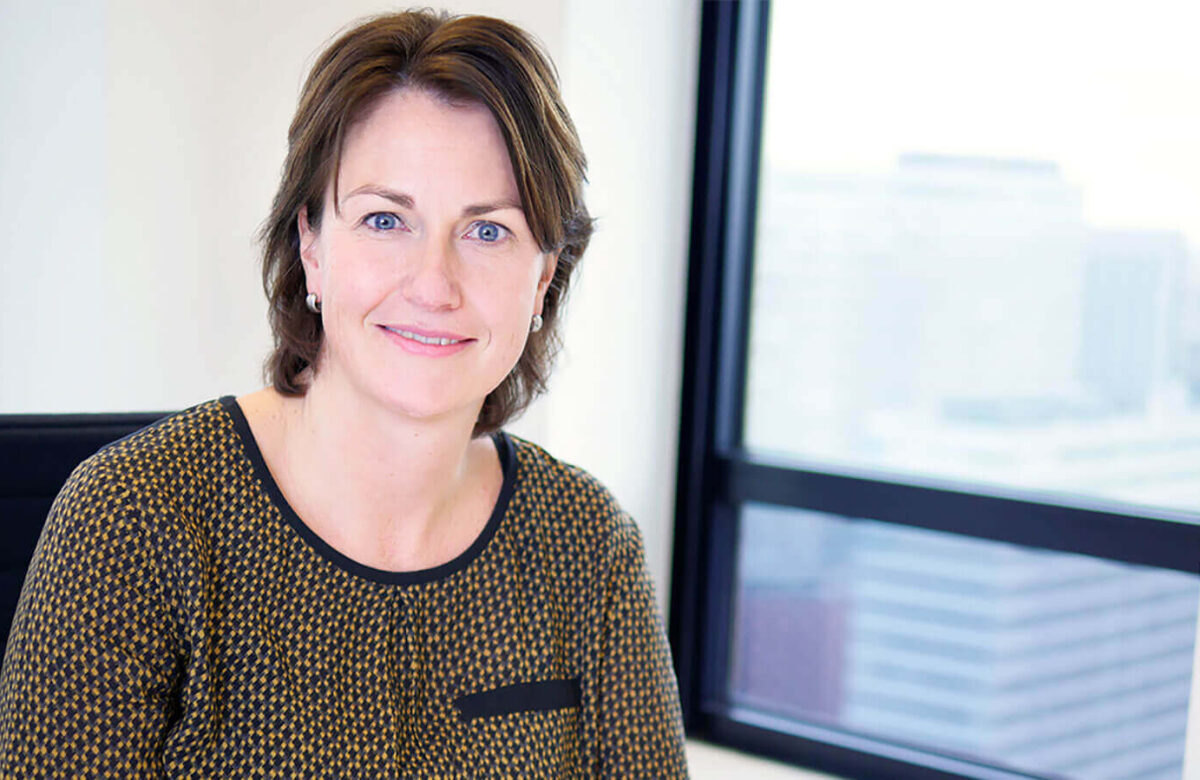How Elsevier Evolved in the Face of Threat from Open Science
The world’s biggest academic publisher is adapting to the changing landscape
- PublisherArticleInterview
- February 1, 2021

In the last decade, many leading academic publishers have reinvented themselves. In the ’90s, the emergent open science movement was, in some instances, perceived as a threat for academic publishers. But today, it is clear that publishers continue to play an important role in the research ecosystem, which has further evolved their role as well as their business opportunities.
We spoke to Laura Hassink, Senior Vice President of Publishing Transformation at Elsevier.
Becoming a full-spectrum solutions provider to authors
Academic publishers are often criticized for their commercialism in the context of open science. However, we can’t forget that publishers and academic communities have enjoyed an interdependent relationship since the nineteenth century. Today, around two million articles are published in 30,000 journals every year. Publishing such volumes of articles, and with the quality that is expected from research articles, would not have been feasible without the infrastructure set up by large publishers over centuries. When discussing the history of science and technology, platform innovations cannot be left out. Such innovations today require heavy investment in the latest technology, and we benefit from the investment by commercial companies.
Elsevier, the world’s largest academic publisher, has evolved from “an academic publisher” to “a global information and analytics business.” While it attracts institutional managements and library with products like Scopus and SciVal, researchers continue to be a very important customer base and Elsevier is rapidly becoming a full-spectrum solutions provider for the researcher throughout their ecosystem.
Laura has seen positive interest from the recent partnership between F1000 Research and the University of Tsukuba and welcomed similar initiatives aimed at improving the researcher ecosystem. “We look forward to hearing about their experience with this setup and what the scientific community and publishers like us can learn from it. What matters the most is the quality of research outcomes and advancing health and science, and the model that drives that should be open for experimentation and change,” she says.
She adds, “We are committed to continuously improve the publication model, processes, and practices. We want to take into account the changing customer needs. In the research ecosystem today, the role of funders, universities, and the government is evolving and publishers like us need to adapt and provide a better platform to continue providing support to the diverse stakeholders in science. Our goal is to provide better and more options to tackle long-standing issues by making use of modern technology.”
Addressing long-standing challenges
Transparency in journal processes, speed of publication, and cost of subscription have long been contentious issues. While the academic community may have not taken notice, publishers have been making concerted efforts to find suitable solutions. It may seem that by addressing these issues, commercial publishers are going against their self-interest (for example, by making articles available on open access, publishers are letting go of their golden egg, i.e., paid access to content). However, by tackling these issues, they are reconnecting with authors.
Here are some recent initiatives taken by Elsevier to tackle long-standing publication issues.
|
Issues |
Initiatives by Elsevier |
|
Transparency in peer review |
|
|
Speed of publication |
|
|
Cost of subscription |
|
“Elsevier journals are constantly trying to make the peer review processes more transparent,” Laura says. “Since 2013, Elsevier has made the editorial times and acceptance rates of our journals openly available and is constantly expanding its guidance and investing in tools to improve the process using the latest technology. The transparency of authorship is as important as that of peer review; we recently rolled out CRediT (Contributor Roles Taxonomy) to most of our journals, which offers authors the opportunity to include an accurate and detailed description of their diverse contribution to the published work.”
Elsevier has been tackling the issue of publication speed with investments in both technology and resources. “Our in-house publishers work with the editors of each journal to optimize the publication process. In most cases, we can publish the first version of the accepted paper online a few days after acceptance,” Laura adds. “We also invest heavily in tools to make it easier for editors and reviewers to do their work. Both editors and reviewers get access to ScienceDirect and Scopus to help them do their work by easily being able to look up co-authors, related manuscripts, citations, etc.”
The phenomenon of subscription cost increase—called “serials crisis”—and open access movements such as BOAI and Plan S required Elsevier to adapt to the changing landscape.
Laura explains, “Elsevier supports both subscription and open access, and we work with all our institutional and individual customers to find access models that suit their needs while optimizing access. As an example, in early 2020, we formed a novel partnership with Dutch research institutions that includes publishing and reading services as well as the joint development of new open science services for disseminating and evaluating knowledge. Over 90% of the journals allow open access publication and make an article permanently available. All journals offer a free, green open access option. Every year, over 45,000 subscription articles are made available under green open access—more than any other publisher.”
She adds, “We find it important that we provide transparent information to the author throughout their journey about their publishing options and the costs associated with that, for example, whether we have an agreement with their institution which enables them to publish open access with the costs covered centrally by the institution. We significantly invest in improving the author experience during the submission process.”
Regarding the need for local language publication in the humanities and its indexing and assessment, Laura says, “Elsevier has a very limited number of journals in the humanities and the areas where we do, journal titles are more allied to Social Sciences or could even be classified as either. On the whole, we have not seen a renewed push for local language publishing. It was something we received some requests for a few years back, especially in Spanish, but not recently. As a result, other investments took priority.”
A one-stop shop for the research ecosystem
F1000Research joined the Taylor & Francis Group this year, which gave authors publishing in Taylor & Francis journals another option of publication. In 2016, Elsevier acquired SSRN, an open-access online preprint community for research institutions and governments, and in 2018, Aries Systems, a workflow infrastructure solution for rapid publishing. SSRN provides a branded “journal-like” abstract page to aggregate preprint publications for institutions similar to F1000Research.
To support the diverse publication styles available today and stay relevant in this digital transformation, leading publishers and new platform ventures need to find ways to work together.
Laura believes there is a strong need in the scientific community to share research results early on, a need that has become very clear in the current COVID-19 pandemic, as researchers around the world are collaborating on vaccines and treatment. Preprint servers such as SSRN play an important role in this regard.
SSRN works closely with Aries Systems to accept submissions. Laura elaborates: “SSRN offers a platform where research can evolve over time by allowing revisions to papers and aggregating different versions (conference proceedings, working papers, book chapters, etc.) into a version group that creates a broader perspective of the research being done. Research is hosted on SSRN at all stages from ideas to working papers to preprints to versions of a record.” Laura believes that this provides enhanced sharing and connectivity among researchers.
SSRN also facilitates the cross-pollination of ideas. Content is curated by SSRN staff across the platform’s 50+ research networks by categorizing research into different disciplines so that the researchers in one subject area can view the research submitted to another subject area. SSRN provides thousands of online communities for sharing scholarly research.
It’s clear that Elsevier is trying to build an ecosystem that facilitates author–publisher collaboration. First Look, for example, is a partnership between SSRN and some of the world’s leading journals to provide rapid, early, and open access to research prior to publication. Authors can “opt-in” to First Look when they submit their paper to a journal. A preprint version of their paper is sent to SSRN and posted to a branded First Look page on SSRN. According to Laura, First Look papers benefit from the broad SSRN services supporting discoverability.
Elsevier today goes beyond publishing, a change made possible by the evolving needs of the stakeholders in the research ecosystem and resulting new trends like open access.
Vastly modernizing and improving the traditional system of academic publication was no easy task, and significant investments in technology, systems, and processes were needed to bring about this disruption. However, all players seem willing to facilitate the digital age, hoping to reap the benefits.
References
1. https://www.elsevier.com/connect/transparency-the-key-to-trust-in-peer-review
2. https://www.elsevier.com/connect/reviewers-update/peer-review-using-todays-technology
3. https://www.elsevier.com/connect/editors-update/editor-time-savers
LAURA HASSINK
Laura Hassink is Senior Vice President Publishing Transformation at Elsevier. She is responsible for the transformation of key aspects of the publishing process and organization by embedding data-driven decision making and iterative product management principles. Laura leads a team of around 170 people in multiple locations in Europe, the US, and Asia. Laura joined Elsevier in 1997 and held several (management) roles in publishing, strategy, and (online) product development prior to her current role.
This article is a part of ScienceTalks Magazine issue Welcome to the New Era of Open Publication.




